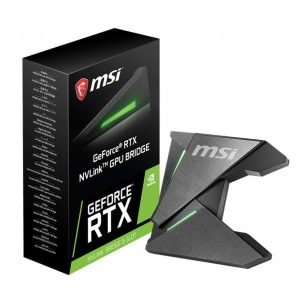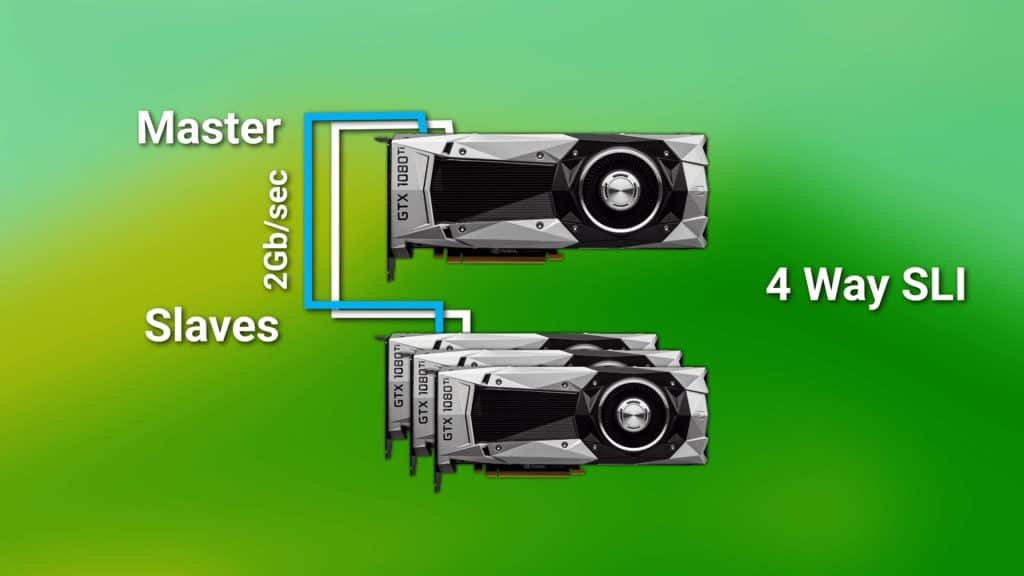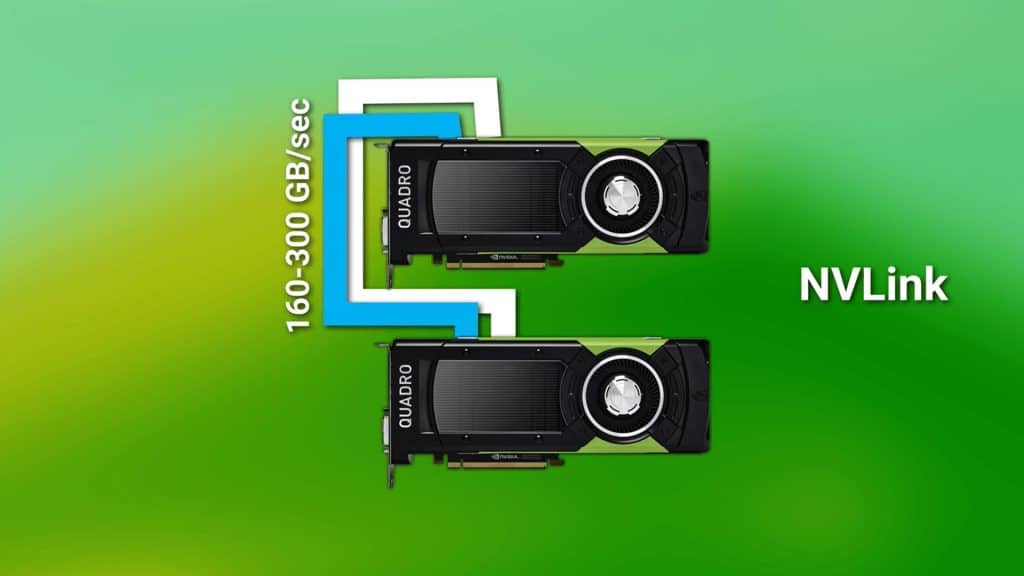SLI and Crossfire are the most commonly used terms you notice whenever someone talks about a multi-GPU setup. These two technologies allow people to run multi-GPU setups on their computers using Nvidia and AMD graphics cards respectively.
Learn more about SLI and Crossfire here.
Nvidia launched a new technology called NVLink that allows people to set up a multi-GPU configuration using the high-end RTX graphics cards and other Nvidia workstation graphics cards.
The SLI and Crossfire technologies are slowly becoming less popular among average consumers thanks to the availability of strong cards capable of taking care of most gaming needs at an affordable price. Is NVLink going to change this trend? Will NVLink make multi-GPU setups exciting again?
What is the difference between SLI and NVLink? Is NVLink better than SLI? Is running a multi-GPU setup for gaming using NVLink worth it? These are some of the questions I’ll answer in this article.
What is NVLink?
NVLink is the new inter-GPU communication protocol designed by Nvidia for RTX and Quadro graphics cards. It has higher bandwidth and is an overall improvement over the SLI bridges.
It allows you to connect multiple high-end Nvidia RTX graphics cards like RTX 2070 Super, RTX 2080, RTX 2080 Super, RTX 2080 Ti.
It also works for workstation Nvidia graphics cards such as Quadro RTX 5000, Quadro RTX 8000, Quadro RTX 6000, Quadro GV100, Quadro GP100.

NVLink vs SLI: How they Work?
SLI and NVLink work in different ways.
SLI cards have a Master-Slave Relationship. There is one master card and other connected cards act as slave cards. You can connect up to four cards in an SLI build where one card acts as a master and the other three cards act as slave cards. They are connected together using Nvidia’s high-bandwidth SLI bridges that have a bandwidth of 2GB/s.
The master card directs and divides the workload among the connected slave cards. The work is processed among the slave cards and the completed work (like video render results etc) is then returned to the master card using the SLI bridges. The master card then combines the workload and produces a single output onto the monitor.
This Master-Slave relationship limits the maximum memory of the SLI builds to the Master card’s total memory. This is the reason you cannot SLI two 8GB cards and have 16GB memory available to you. The same can be said for AMD’s crossfire.

In contrast to the SLI, the transfer of workload among the connected NVLink cards is bi-directional. This means the NVLink cards do not have a master-slave relationship. The two connected cards act as one.
Each connected graphics card has access to other’s memory. You will be able to double your memory using NVLink connectors. If you connect two 11GB RTX 2080 Ti cards using an NVLink, you now have access to 22GB memory.
They are connected using NVLink bridges that have a bandwidth of 25GB/s to 35GB/s on the GeForce RTX cards and up to 100GB/s on the Quadro Workstation cards which is higher than the bandwidth you get on the SLI bridges.

Is NVLink worth it?
To be honest, NVLink was traditionally targeted at the workstation graphics cards. If you’re using a multi-GPU setup for deep learning and machine learning applications, High-end video rendering, etc, you will definitely see the improvement in overall performance by using the NVLink.
So, if you have to choose between SLI and NVLink for a workstation, go for NVLink anytime. It can support higher bandwidths and is a good option considering long-term benefits.
In my article about Crossfire vs SLI, I’ve mentioned that the popularity of multi-GPU setups for gaming is slowly decreasing due to the availability of powerful graphics cards capable of satisfying most gaming requirements at an affordable price.
It is not uncommon in 2023 to see a single card run games at 1080p 144Hz or at 1440p 144Hz efficiently.
The introduction of NVLink technology does not make multi-GPU setups for gaming any more interesting than they already are. For now, NVLink is simply laying a foundation for future multi-GPU setup
There are many problems with using a multi-GPU setup for gaming like micro-stutter, negative scaling of multi-GPU setup which are still prevalent even when you use NVLink.
Sure, you’ll get that extra memory. The extra memory only works if the game developers add extra code to the game to efficiently utilize it. In some cases, you’ll have no significant improvement. Moreover, I have doubts about whether developers are willing to spend resources to satisfy a small pool of multi-GPU users.
If the game does not support NVLink, you’ll face problems running them even though you have a powerful graphics card. Even the 10-fold increase in bandwidth also will not be beneficial to most gamers in this case.
Of course, you also have to deal with higher power consumption and better cooling solutions which increases your overall budget.
Having an NVLink setup for is beneficial if you’re a hard-core enthusiast who wants to game at a resolution higher than 4K at refresh rates higher than 60Hz using the maximum graphics settings.
For most gamers, choosing a single powerful graphics card is the optimal choice. Today, a single 2080 Ti will be able to run most games at 4K resolution at 60Hz. You can always overclock it for more juice.
If you have any other queries, Talk to us in the comments section below.